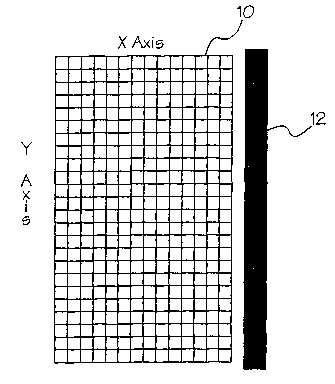Some of the information on this Web page has been provided by external sources. The Government of Canada is not responsible for the accuracy, reliability or currency of the information supplied by external sources. Users wishing to rely upon this information should consult directly with the source of the information. Content provided by external sources is not subject to official languages, privacy and accessibility requirements.
Any discrepancies in the text and image of the Claims and Abstract are due to differing posting times. Text of the Claims and Abstract are posted:
| (12) Patent Application: | (11) CA 2400036 |
|---|---|
| (54) English Title: | THERMAL PRINTING A TWO-COLOR SALES RECEIPT |
| (54) French Title: | IMPRESSION THERMIQUE DUN RECU DE VENTE BICOLORE |
| Status: | Deemed Abandoned and Beyond the Period of Reinstatement - Pending Response to Notice of Disregarded Communication |
| (51) International Patent Classification (IPC): |
|
|---|---|
| (72) Inventors : |
|
| (73) Owners : |
|
| (71) Applicants : |
|
| (74) Agent: | MACRAE & CO. |
| (74) Associate agent: | |
| (45) Issued: | |
| (86) PCT Filing Date: | 2001-11-09 |
| (87) Open to Public Inspection: | 2002-08-29 |
| Examination requested: | 2002-08-12 |
| Availability of licence: | N/A |
| Dedicated to the Public: | N/A |
| (25) Language of filing: | English |
| Patent Cooperation Treaty (PCT): | Yes |
|---|---|
| (86) PCT Filing Number: | PCT/US2002/000238 |
| (87) International Publication Number: | WO 2002067215 |
| (85) National Entry: | 2002-08-12 |
| (30) Application Priority Data: | ||||||
|---|---|---|---|---|---|---|
|
Methods of enhancing the appearance of, and safeguarding, sales receipts. The
methods provide sales receipts with watermarks, strike-throughs, and circles-
about-an-item. These added functions can be accomplished in real time. Some of
them can be printed in distinguishing colors.
Cette invention concerne des procédés permettant d'améliorer l'aspect de reçus de vente et de mieux conserver lesdits reçus. Avec ces procédés, il est possible d'obtenir des reçus avec filigranes, traversements et points entourés de cercles. Ces fonctions supplémentaires peuvent être exécutées en temps réel. Pour certaines, l'impression peut se faire dans des couleurs distinctes.
Note: Claims are shown in the official language in which they were submitted.
Note: Descriptions are shown in the official language in which they were submitted.

2024-08-01:As part of the Next Generation Patents (NGP) transition, the Canadian Patents Database (CPD) now contains a more detailed Event History, which replicates the Event Log of our new back-office solution.
Please note that "Inactive:" events refers to events no longer in use in our new back-office solution.
For a clearer understanding of the status of the application/patent presented on this page, the site Disclaimer , as well as the definitions for Patent , Event History , Maintenance Fee and Payment History should be consulted.
| Description | Date |
|---|---|
| Application Not Reinstated by Deadline | 2006-11-09 |
| Time Limit for Reversal Expired | 2006-11-09 |
| Inactive: Abandoned - No reply to s.30(2) Rules requisition | 2006-02-20 |
| Deemed Abandoned - Failure to Respond to Maintenance Fee Notice | 2005-11-09 |
| Inactive: S.30(2) Rules - Examiner requisition | 2005-08-18 |
| Amendment Received - Voluntary Amendment | 2005-04-06 |
| Inactive: S.29 Rules - Examiner requisition | 2005-01-14 |
| Inactive: S.30(2) Rules - Examiner requisition | 2005-01-14 |
| Amendment Received - Voluntary Amendment | 2004-07-13 |
| Inactive: S.30(2) Rules - Examiner requisition | 2004-04-14 |
| Inactive: S.29 Rules - Examiner requisition | 2004-04-14 |
| Letter Sent | 2003-02-20 |
| Inactive: Single transfer | 2003-01-06 |
| Inactive: Cover page published | 2002-12-17 |
| Inactive: Courtesy letter - Evidence | 2002-12-17 |
| Letter Sent | 2002-12-13 |
| Inactive: Acknowledgment of national entry - RFE | 2002-12-13 |
| Application Received - PCT | 2002-10-04 |
| Application Published (Open to Public Inspection) | 2002-08-29 |
| National Entry Requirements Determined Compliant | 2002-08-12 |
| Request for Examination Requirements Determined Compliant | 2002-08-12 |
| All Requirements for Examination Determined Compliant | 2002-08-12 |
| National Entry Requirements Determined Compliant | 2002-08-12 |
| Abandonment Date | Reason | Reinstatement Date |
|---|---|---|
| 2005-11-09 |
The last payment was received on 2004-10-21
Note : If the full payment has not been received on or before the date indicated, a further fee may be required which may be one of the following
Please refer to the CIPO Patent Fees web page to see all current fee amounts.
| Fee Type | Anniversary Year | Due Date | Paid Date |
|---|---|---|---|
| Basic national fee - standard | 2002-08-12 | ||
| Request for examination - standard | 2002-08-12 | ||
| Registration of a document | 2003-01-06 | ||
| MF (application, 2nd anniv.) - standard | 02 | 2003-11-10 | 2003-09-29 |
| MF (application, 3rd anniv.) - standard | 03 | 2004-11-09 | 2004-10-21 |
Note: Records showing the ownership history in alphabetical order.
| Current Owners on Record |
|---|
| AXIOHM TRANSACTION SOLUTIONS, INC. |
| Past Owners on Record |
|---|
| STEVEN SPANO |